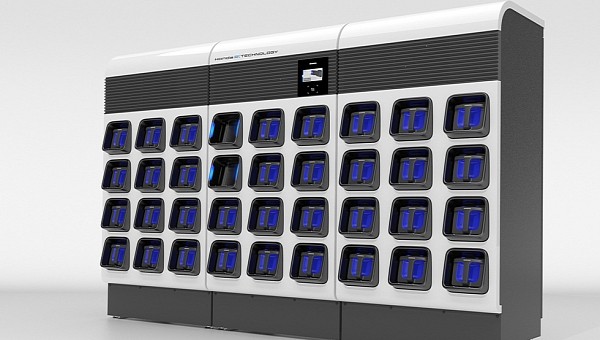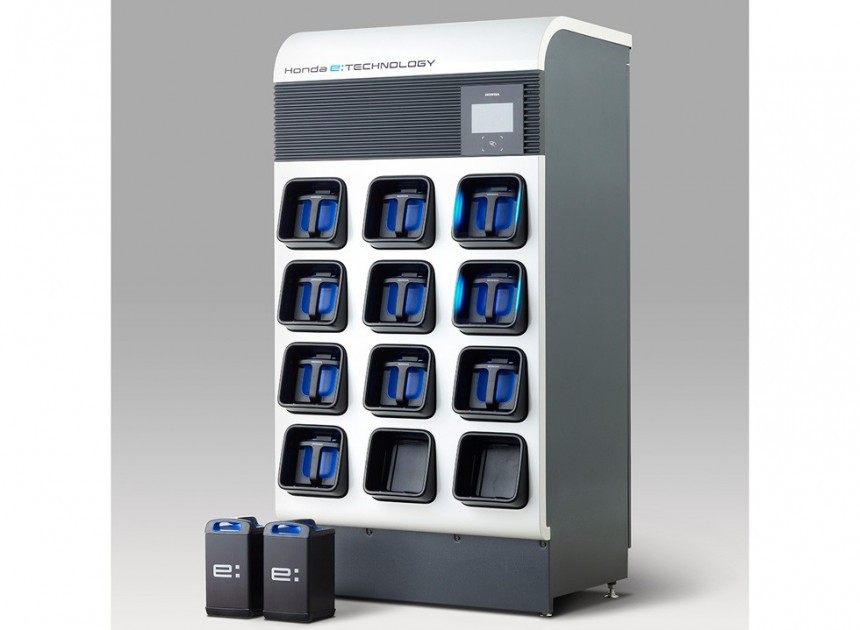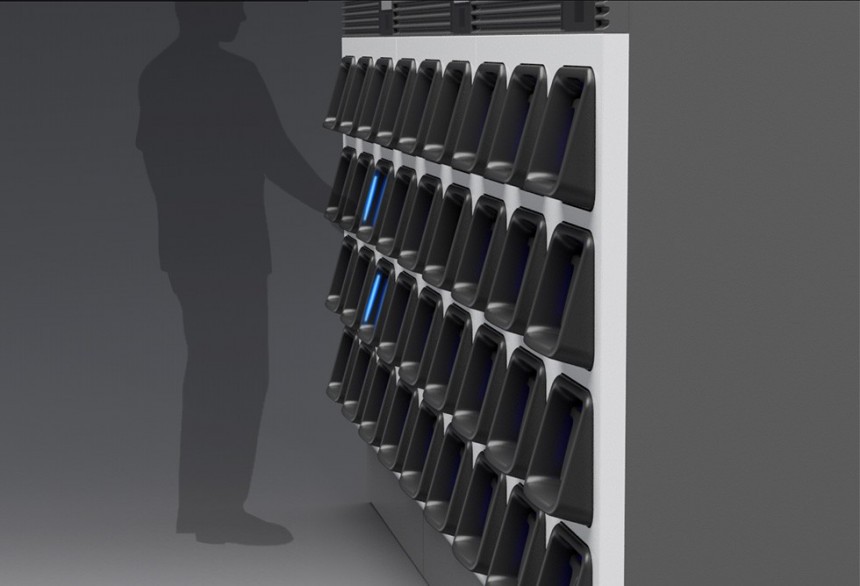Honda Motor Co. has announced this week that it started selling the Honda Power Pack Exchanger battery swapping station in Japan.
The first unit was delivered to Gachaco Inc., a battery-sharing service created as a joint venture between the Japanese oil and energy company Eneos and motorcycle manufacturers Yamaha, Suzuki, and Kawasaki. The company is based in Tokyo and is receiving support from the city's government to meet its goal of eliminating gasoline from all new motorcycles by 2033.
Honda is also looking to reach carbon neutrality for all its products and corporate activities by 2050. By expanding the use of renewable energy, Honda hopes to contribute to the acceleration and expansion of electrification. This phenomenon is already happening worldwide. To be fully adopted, several key factors need to be addressed – short range, long charging time, and high battery costs.
So, how does the battery swapping station work? It charges multiple units of Honda Mobile Power Pack (MPP e:). Each battery pack comes with a 1,314 Wh capacity and takes around five hours to juice up.
The users of EVs equipped with the MPP e: will have access to fully charged batteries, which enables the efficient use of electrified mobility products. No more need to wait for your battery to charge when you can just stop by the station, quickly swap the MPP e:, and go on about your business.
Gogoro is a Taiwanese company that's been promoting and using this technology for years. Back in 2015, the company released its first scooter and used the Gogoro Network to power it. More than 2,000 battery charging stations are located around Taiwan, where riders can replace batteries with fully charged ones. The process takes about two minutes; it's even faster than pumping gas.
So, this technology has been proven to work in Taiwan. Honda has decided to take on the mobility giant by creating a technology of its own. It might have taken some inspiration from Gogoro as its battery-swapping station has a similar design to Gogoro's station. Basically, it looks like some sort of vending machine, only instead of snacks and drinks, you have a bunch of battery packs that slide in and out of slots. Its straightforward exterior design has been purposely chosen to fade into the background of public spaces. Moreover, it uses the Honda Power Pack Cloud system to centralize and manage all the necessary information.
In case of a power outage, a single charged battery can power the entire exchanger station – this way, commuters won't get trapped there.
Let's imagine you have an EV with an MPP e: battery pack. The first step is to sign up for Honda's system, and you will receive a unique IC card. You are riding around town, and you notice that your battery is running low. Pull up to the nearest station and walk up to the touchscreen monitor. Once the system identifies your IC card, you can pop out your discharged battery and swap it for a fully charged one.
Honda plans to expand into other counties - it has already set up a subsidiary company in India to sell electric tricycle taxis, also known as rickshaws. The vehicles are using the battery-sharing service.
All in all, this type of service might be the future of urban mobility. It's easy to use, contributes to the realization of a low-carbon society, and eliminates the stress of long charging times and running out of battery. Even though two-wheeled vehicles aren't as popular in other parts of the world, if everything goes well in the countries where battery-sharing is possible, we might see global implementation in the near to mid-future.
Honda is also looking to reach carbon neutrality for all its products and corporate activities by 2050. By expanding the use of renewable energy, Honda hopes to contribute to the acceleration and expansion of electrification. This phenomenon is already happening worldwide. To be fully adopted, several key factors need to be addressed – short range, long charging time, and high battery costs.
So, how does the battery swapping station work? It charges multiple units of Honda Mobile Power Pack (MPP e:). Each battery pack comes with a 1,314 Wh capacity and takes around five hours to juice up.
Gogoro is a Taiwanese company that's been promoting and using this technology for years. Back in 2015, the company released its first scooter and used the Gogoro Network to power it. More than 2,000 battery charging stations are located around Taiwan, where riders can replace batteries with fully charged ones. The process takes about two minutes; it's even faster than pumping gas.
So, this technology has been proven to work in Taiwan. Honda has decided to take on the mobility giant by creating a technology of its own. It might have taken some inspiration from Gogoro as its battery-swapping station has a similar design to Gogoro's station. Basically, it looks like some sort of vending machine, only instead of snacks and drinks, you have a bunch of battery packs that slide in and out of slots. Its straightforward exterior design has been purposely chosen to fade into the background of public spaces. Moreover, it uses the Honda Power Pack Cloud system to centralize and manage all the necessary information.
Let's imagine you have an EV with an MPP e: battery pack. The first step is to sign up for Honda's system, and you will receive a unique IC card. You are riding around town, and you notice that your battery is running low. Pull up to the nearest station and walk up to the touchscreen monitor. Once the system identifies your IC card, you can pop out your discharged battery and swap it for a fully charged one.
Honda plans to expand into other counties - it has already set up a subsidiary company in India to sell electric tricycle taxis, also known as rickshaws. The vehicles are using the battery-sharing service.
All in all, this type of service might be the future of urban mobility. It's easy to use, contributes to the realization of a low-carbon society, and eliminates the stress of long charging times and running out of battery. Even though two-wheeled vehicles aren't as popular in other parts of the world, if everything goes well in the countries where battery-sharing is possible, we might see global implementation in the near to mid-future.








